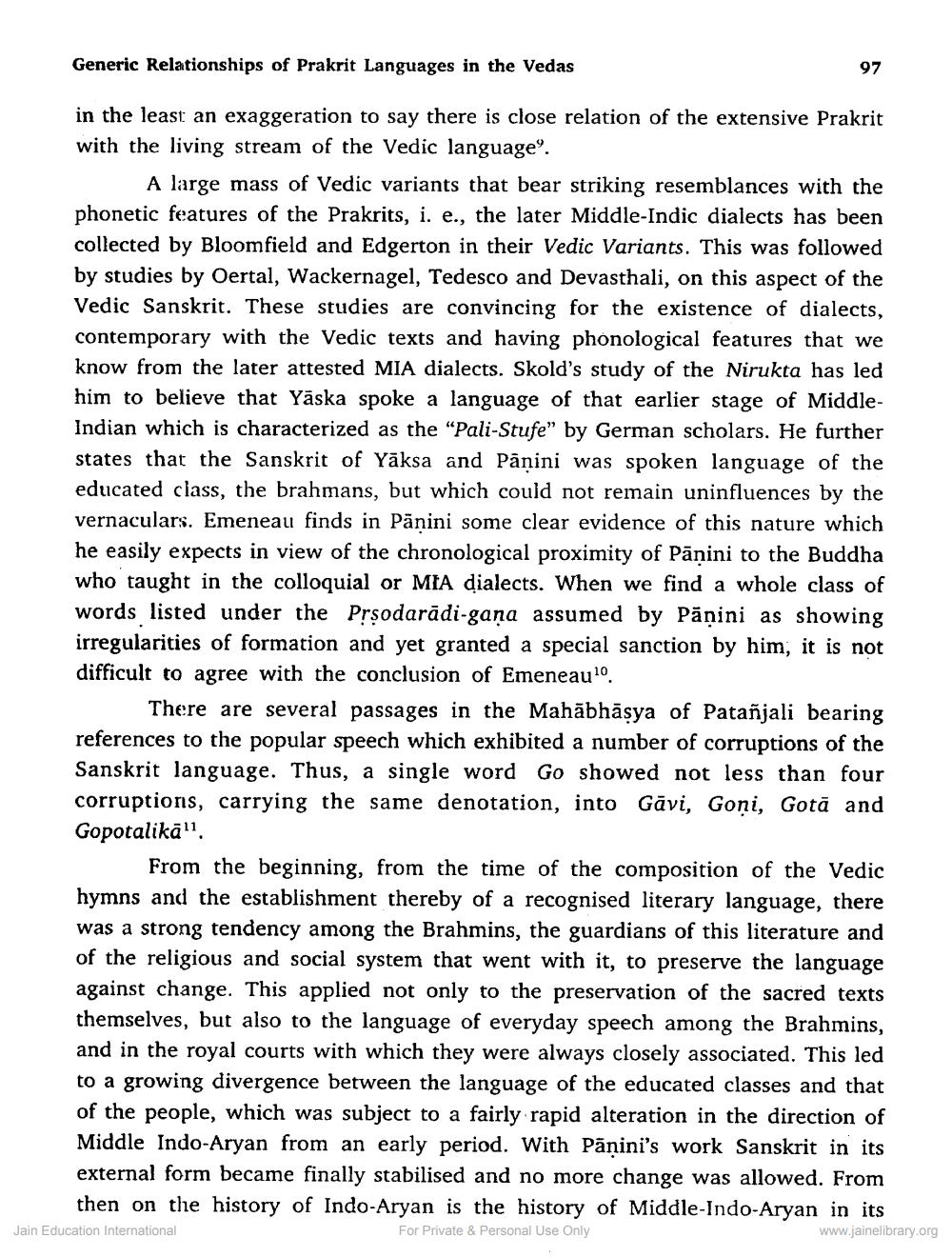________________
Generic Relationships of Prakrit Languages in the Vedas
97
in the least an exaggeration to say there is close relation of the extensive Prakrit with the living stream of the Vedic language".
A large mass of Vedic variants that bear striking resemblances with the phonetic features of the Prakrits, i. e., the later Middle-Indic dialects has been collected by Bloomfield and Edgerton in their Vedic Variants. This was followed by studies by Oertal, Wackernagel, Tedesco and Devasthali, on this aspect of the Vedic Sanskrit. These studies are convincing for the existence of dialects, contemporary with the Vedic texts and having phonological features that we know from the later attested MIA dialects. Skold's study of the Nirukta has led him to believe that Yāska spoke a language of that earlier stage of MiddleIndian which is characterized as the "Pali-Stufe" by German scholars. He further states that the Sanskrit of Yäksa and Panini was spoken language of the educated class, the brahmans, but which could not remain uninfluences by the vernaculars. Emeneau finds in Pānini some clear evidence of this nature which he easily expects in view of the chronological proximity of Pānini to the Buddha who taught in the colloquial or MŁA dialects. When we find a whole class of words listed under the Prsodarādi-gana assumed by Panini as showing irregularities of formation and yet granted a special sanction by him, it is not difficult to agree with the conclusion of Emeneau'.
There are several passages in the Mahābhāsya of Patañjali bearing references to the popular speech which exhibited a number of corruptions of the Sanskrit language. Thus, a single word Go showed not less than four corruptions, carrying the same denotation, into Gāvi, Goni, Gotā and Gopotalikäl.
From the beginning, from the time of the composition of the Vedic hymns and the establishment thereby of a recognised literary language, there was a strong tendency among the Brahmins, the guardians of this literature and of the religious and social system that went with it, to preserve the language against change. This applied not only to the preservation of the sacred texts themselves, but also to the language of everyday speech among the Brahmins, and in the royal courts with which they were always closely associated. This led to a growing divergence between the language of the educated classes and that of the people, which was subject to a fairly rapid alteration in the direction of Middle Indo-Aryan from an early period. With Pāṇini's work Sanskrit in its external form became finally stabilised and no more change was allowed. From
then on the history of Indo-Aryan is the history of Middle-Indo-Aryan in its Jain Education International For Private & Personal Use Only
www.jainelibrary.org




